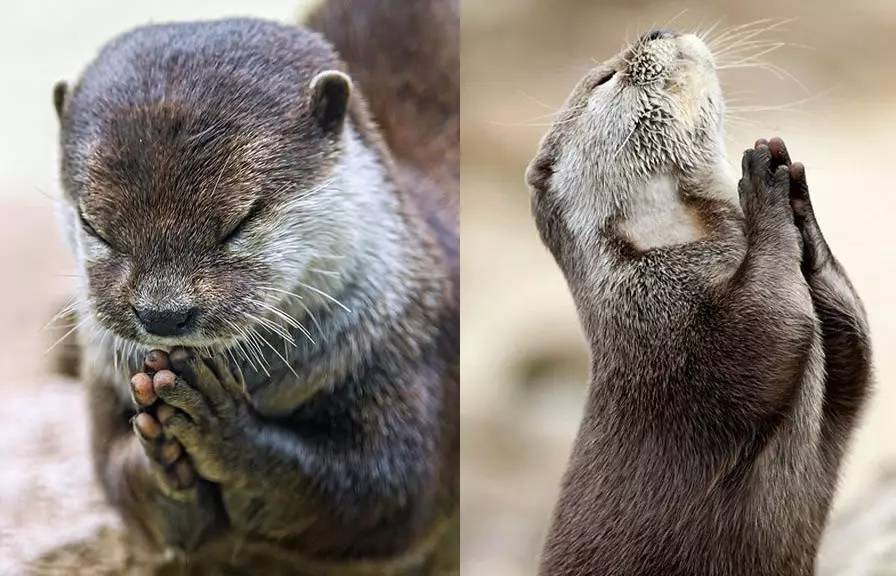Aonyx cinerea
IUCN
LCBasic Information
Scientific classification
- name:Aonyx cinerea
- Scientific Name:Small-clawed otter, Oil otter, Oriental small-clawed otter
- Outline:Carnivora
- Family:Carnivora Mustelidae Aonyx
Vital signs
- length:40.6 ~ 63.5 cm
- Weight:2.7~5.4 kg
- lifetime:About 11 years
Feature
The smallest otter species in the world
Distribution and Habitat
The Asian small-clawed water otter is mainly distributed in South Asia and Southeast Asia, including India, Indonesia, Malaysia, southern China, Taiwan and the Philippines. It lives in forests, rice fields, lakes, rivers, reservoirs, canals, mangroves and coastal areas with fresh water and muddy swamps. It does not like open areas without any cover.
Appearance
The body length of the Asian small-clawed otter is generally between 40-63cm, the tail length is 26-30cm, the weight is about 2.7-5.4kg, the outer layer of hair is 12-14mm long, and the inner layer is 6-9mm long.
The Asian small-clawed otter is bright ochre to dark brown in color, with a short and wide head. The exposed area of the nose pad and the fur are neatly connected in a horizontal straight line. The upper edge of the nose is not concave, and the teeth are large, with 34 teeth. There are sparse bristles in front of and on both sides of the lower jaw. The throat is lighter in color, white to gray, forming a sharp contrast with other parts; the nose is pink or slightly black, with a pointed upper edge. The fur on its back is dark brown and more shiny; the color of the abdomen is lighter, but there are no white needle hairs; the tips of the needle hairs on the cheeks, chin and throat are white; the limbs are short, with large and thick foot pads, five toes on each limb, and in
Details
On October 10, 2016, a cute creature quickly became famous all over the world with a photo. In the photo, it has its eyes closed, its two small paws tightly folded, and a serious expression, just like a little angel praying devoutly. This cute creature is the Asian small-clawed otter.

Asian small-clawed otters are good at swimming and diving. They have a slender, cylindrical body, a soft body and a tail that is thick at the base and gradually becomes pointed near the end to reduce the resistance of movement in the water; the brown fur on the body prevents water from penetrating and instead bounces off. When they swim, they keep their front limbs close to their bodies, and use their hind limbs and tails to propel them, making their bodies rise and fall in waves. They are not only fast, but also very flexible in rising and falling and turning. They can move forward and backward, left and right, and roll freely in the water. Sometimes they like to swim like drawing circles, and they can swim quite far underwater.
Asian small-clawed otters love fishing. Even after a full meal, they will continue to fish endlessly. Fishermen use this feature to train them to become excellent fishermen.
Due to excessive hunting by humans and pollution of the environment, the number of small-clawed otters has decreased. In China, small-clawed otters have been listed as a national key protected wild animal.
Listed in the 2012 IUCN Red List of Threatened Species ver 3.1 - Vulnerable (VU).
Listed in Appendix II of the Convention on International Trade in Endangered Species of Wild Fauna and Flora (CITES).








